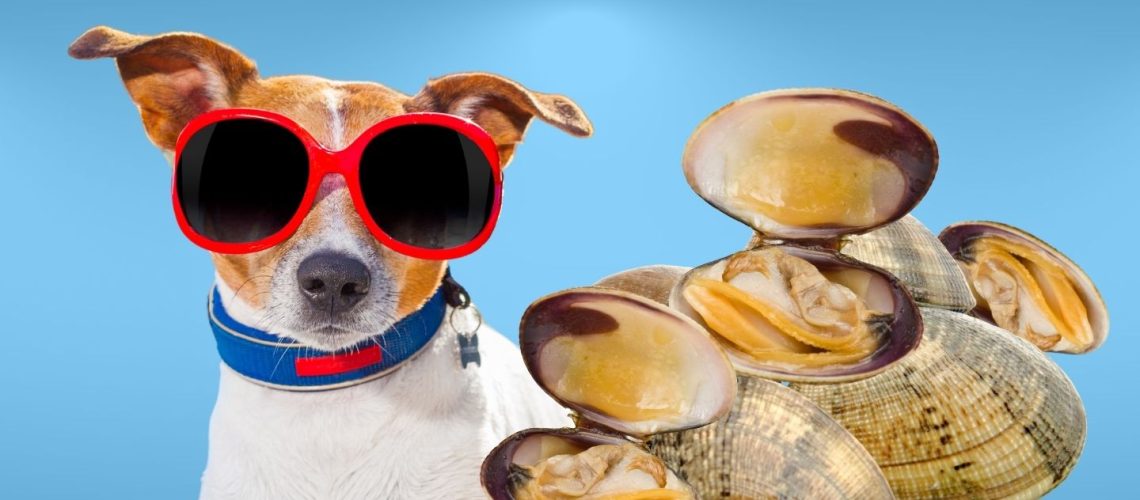Yes, dogs can eat clams, and in fact, clams can provide several nutritional benefits for dogs. They are a lean source of protein and contain essential vitamins and minerals like iron, zinc, and vitamin B12. Additionally, clams also offer omega-3 fatty acids that contribute to skin and coat health, immune system support, and muscle function. It's important to feed clams in moderation and ensure they are cooked and free from any seasonings or additives that could potentially harm your dog. Always consult with your veterinarian regarding portion sizes and frequency of feeding clams to your dog.
Nutritional Benefits of Clams for Dogs
Protein Content and Benefits
Clams are a lean source of protein, which is crucial for your dog's overall health. Protein is necessary for building and maintaining muscles, supporting immune function, and repairing damaged tissues.
Vitamins and Minerals in Clams
Clams contain essential vitamins and minerals such as iron, zinc, and vitamin B12. Iron is important for oxygen transportation in your dog's blood, while zinc helps maintain healthy skin, coat, and immune system. Vitamin B12 plays a role in nerve function and red blood cell production.
Omega-3 Fatty Acids and Their Benefits
Omega-3 fatty acids found in clams can help reduce inflammation, support a healthy immune system, and contribute to a shiny and healthy coat. They also play a role in brain development and function.
Potential Risks and Concerns
Allergic Reactions
Some dogs may be allergic to shellfish, which can cause skin irritations or digestive upset. Monitor your dog for any negative reactions after introducing clams to their diet.
Choking Hazards
Whole clams could pose a choking hazard for dogs, so it's essential to chop them into small pieces or remove the clam from the shell before feeding them to your pet.
Shell Fragments and Potential Injuries
Sharp shell fragments can cause damage to your dog's mouth, throat, or gastrointestinal tract, so ensure that the clams are thoroughly cleaned and cooked before feeding them to your dog.
Contamination and Parasites
Raw clams may contain harmful bacteria or parasites which can lead to illness in your pet. Always cook clams before feeding them to your dog.
High Sodium Content
Clams are naturally high in sodium, which could be harmful if consumed in large quantities. Feed clams to your dog in moderation to avoid detrimental effects from excessive sodium intake.
How to Feed Clams to Your Dog
Choosing the Right Clams
When feeding clams to your dog, opt for fresh, unseasoned clams, or canned clams without added ingredients. Avoid giving your dog clams that contain spices, salt, or other flavorings as they may be harmful.
Preparing Clams for Your Dog
To ensure safety, cook the clams thoroughly using methods such as boiling, steaming, or grilling. Remove the clam from its shell, and ensure that there are no shell fragments present.
Mixing Clams with Other Dog-Friendly Foods
Chop the clams into small pieces, and mix them with your dog's regular food to provide a tasty and nutritious treat.
Monitoring Your Dog's Reaction
Keep an eye on your dog after introducing clams to their diet for any signs of allergic reaction or digestive upset.
Portion Size and Moderation
A general guideline is to feed your dog no more than 10% of its daily caloric intake in the form of human food. Consult with your veterinarian to determine the appropriate portion size for your dog based on its individual needs and health status.
Alternatives to Clams for Dogs
If you're hesitant about feeding clams to your dog or if they don't enjoy the taste, consider offering other dog-friendly seafood options like cooked salmon or shrimp. Alternatively, you can provide dog-safe treats and chews or even homemade dog treats made with approved ingredients.
Conclusion
In summary, clams can be a healthy and nutritious treat for your dog when fed in moderation and without any seasonings or additives. Monitor your dog's reaction after introducing clams to ensure their safety and well-being. Always consult with your veterinarian for personalized advice on feeding clams to your dog.









